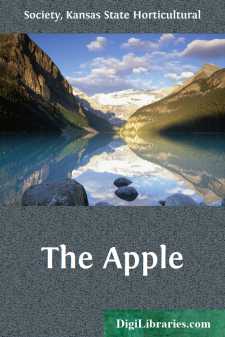Categories
- Antiques & Collectibles 13
- Architecture 36
- Art 48
- Bibles 22
- Biography & Autobiography 813
- Body, Mind & Spirit 142
- Business & Economics 28
- Children's Books 17
- Children's Fiction 14
- Computers 4
- Cooking 94
- Crafts & Hobbies 4
- Drama 346
- Education 46
- Family & Relationships 57
- Fiction 11829
- Games 19
- Gardening 17
- Health & Fitness 34
- History 1377
- House & Home 1
- Humor 147
- Juvenile Fiction 1873
- Juvenile Nonfiction 202
- Language Arts & Disciplines 88
- Law 16
- Literary Collections 686
- Literary Criticism 179
- Mathematics 13
- Medical 41
- Music 40
- Nature 179
- Non-Classifiable 1768
- Performing Arts 7
- Periodicals 1453
- Philosophy 64
- Photography 2
- Poetry 896
- Political Science 203
- Psychology 42
- Reference 154
- Religion 513
- Science 126
- Self-Help 84
- Social Science 81
- Sports & Recreation 34
- Study Aids 3
- Technology & Engineering 59
- Transportation 23
- Travel 463
- True Crime 29
The Apple
Description:
Excerpt
THE CHEMISTRY OF THE APPLE TREE.
Written specially for "The Kansas Apple," By Prof. E. H. S. Bailey, Chemist at the Kansas State University.
In the cultivation of the apple tree, which, like most plants, gets its nourishment from two sources, the soil and the atmosphere, these must be first considered. From the soil come the mineral ingredients, those that are given back to the soil when the plant is burned, and from the atmosphere come the ingredients of no less importance in the growth of the tree, but which mostly disappear as invisible gases upon combustion. Upon the character of this soil, and upon the climate, a general term that may be said to cover the conditions of the atmosphere, depend the success of the horticulturist. In addition to this, insect pests are liable to constantly menace the crop.
In the making of soils, a process that is constantly going on, the most important agents are water, air, frost, sunshine, and the action of living organisms. By this combined action, the mountain, with its rich store of mineral matter, is disintegrated, its constituents are partly dissolved in the water and partly carried mechanically to the plains below; the air is distributed through the soil; seeds are dropped; the living animal forms begin to multiply; the soil is enriched, and gradually it begins to be in a condition suitable to bear the simpler forms of vegetable life, which in turn decaying, add to the richness of the soil.
Furthermore, the mechanical condition of the soil has much to do with the successful growth of the plant. If the soil is extremely fine, it is liable to become so compact that the rootlets cannot easily penetrate it, when it is of such a composition as to bake readily in the sun; if very coarse, like gravel, there is not a sufficient capacity to retain moisture. It should, however, be porous enough to allow the air to penetrate it, for upon the aeration of the soil depends much of its fertility. We loosen the soil about the roots of plants to allow the air to penetrate and give an opportunity for the chemical changes constantly undergoing in the soil. Then, too, the work of the earthworms in loosening the soil, and thus adding to its porosity, should not be overlooked. In this soil workshop, too, live and labor certain minute organisms that make it their business to enrich the soil by helping the rootlets to assimilate the nitrogen of the air.
Since the soil is composed mostly of ingredients that come from the decomposition of rocks, it follows that is must be of very complex composition. Fortunately, however, there are only a few of the ingredients of the soil that are of interest to the agriculturist, as only a few of the elements, as they are called, go to make up the plant structure, or at least only a few are essential ingredients of the plant. Nitrogen, though very abundant in the air, is not abundant in the soil. In fact, the soil has to depend largely on the nitrogen compounds that are washed out of the atmosphere in small quantities by the rain....


